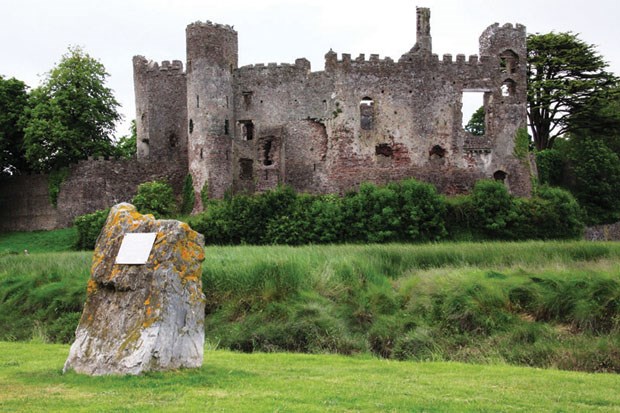In Wales, you can hardly travel more than a few kilometres before stubbing your toes on towering piles of bloodand-history-stained stones. Stone castles, that is.
They come in many sizes, shapes and states of repair. Some are faint traces on hilltops, while others are thumping great fortifications in city centres, barely changed over the centuries.
The reason I was exploring castles in southern Wales is that many are said to be inhabited by ghosts and supernatural beings. The country, I discovered, is brimming with castles, 641 in total, the most per square kilometre of any country in the world. These picturesque structures enfold centuries of history, and also spirits.
I arrived in Cardiff, one of the most beautiful cities in the United Kingdom, to find Cardiff Castle smack in the heart of downtown.
It was built in the late 11th century by Norman invaders on top of a third century Roman fort. In the mid-18th century, after eons of blood and conflict, Cardiff Castle passed to the Marquesses of Bute, who have held it for six generations. They made numerous renovations and remodelled the castle in a magnificent Gothic revival style. But ghosts linger.
I toured the castle as darkness was falling in hopes of meeting the Second Marquess of Bute, who died in 1848, and is said to walk through the fireplace of the library dressed in a long red coat. He then passes through a six-footthick wall into the room in which he died. Another apparition, his wife, Lady Sophia, floats through the castle grounds at night. I saw neither, but goose bumps rose when I heard a low moaning.
I drove 10 kilometres north to Caerphilly Castle, the largest in Wales, which dominates the city. Built by Red Gilbert de Clare in the 13th century, the castle was never conquered because of an enormous moat. I paid only scant heed to its famous leaning tower and to a battery of full-scale siege engines, whose missiles could damage thick walls.
Instead, I hurried to a hidden passageway supposedly haunted by the Green Lady, the wife of Red Gilbert. It is said she fell in love with a Welsh prince. When their tryst was discovered, Gilbert had her lover killed. On learning the news she dropped dead, and, ever since her ghost has haunted the ramparts of Caerphilly Castle seeking her lover.
Heading west, passing numerous other castles, I arrived at the small town of Laugharne. I was excited, for this was where Dylan Thomas, Wales' most famous poet, spent the last four years of his life. The town encircles the ruins of a castle built in the 13th century, probably atop an earlier Norman ringwork castle.
In 1584, Elizabeth I granted Laugharne Castle to Sir John Parrott, said to have been the illegitimate son of Henry VIII, who transformed it into a Tudor mansion. It was besieged and severely damaged during the Civil War in the 1640s. I wandered through the formal garden and climbed the towers for views over the town and the Taf estuary.
Thomas wrote Portrait of the Artist as a Young Dog in the castle gazebo. Celebrating the 100th Thomas birthday in 2014, the castle played host to a series of radio broadcasts and shows in his honour. I'm sure I saw Dylan's ghost high in a tower during the performance.
Further west, Tenby Castle, which dates from 1153, stands on a headland separated by an isthmus from the town. Joining a ghost walk through Tenby, we visited haunted pubs and learned of supernatural goings-on in the back streets. Then we strolled, clinging close together, around Castle hill where a woman from Oklahoma felt a psychic presence.
Later at the Lifeboat Tavern, I raised a flagon of ale and toasted Wales and its multitudinous castles and spirits. I vowed to come again...next time to tour graveyards.
Travel Writers' Tales is an independent travel article syndicate that offers professionally written travel articles to newspaper editors and publishers. To check out more, visit www.travelwriterstales. com.



